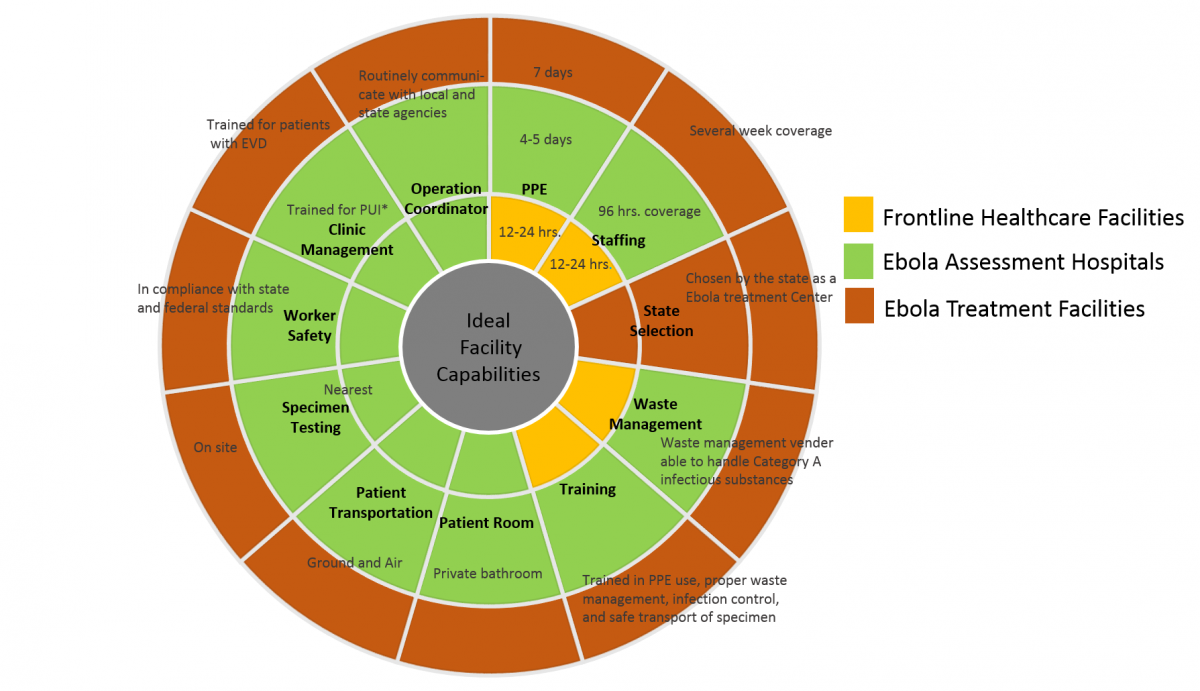Data Sources (CSV):
CDC guidelines provide explicit information on the types and quantities of resources needed at healthcare facilities (HCFs) to address outbreaks of Ebola Virus Disease (EVD) or other High Consequence Infectious Diseases (HCID). Interim guidance for hospital preparedness specifies a multilevel approach that includes three levels of assessment and care HCFs that should be utilized in the event of an EVD outbreak: frontline healthcare facilities, Ebola assessment hospitals, and Ebola treatment centers. However, without an adequate understanding of the demand landscape, implementation of these guidelines are likely to prove ineffective. In this project, factors which would hinder the efficacy of CDC guidelines were identified, and methods to estimate resource needs and population demands for medical care during a complex EVD outbreak were developed.
To estimate the demand landscape, strategies were developed to quantify the needs of specific resources at each HCF by considering the type of each HCF, the geography of areas impacted, evolving disease dynamics, and populations surrounding each facility. A computational methodology was devised to consider the complex spatio-temporal dynamics of the disease as it spreads through the population. This included the development of a Decision Support System to allow decision makers to interact with computational models and define characteristics of individual HCFs using a graphical user interface.
Population estimates from the U.S. Census Bureau, service areas of health care utilization using Primary Care Service Area (PCSA) boundaries from HRSA’s National Center for Health Workforce Analysis, and spatial population partitioning algorithms were employed to quantify the resources needed at existing HCFs to satisfy population demand. Outbreak models were used to better understand how disease dynamics within a population affect the spatio-temporal fluctuations of healthcare resource needs. Differences in population distribution patterns exhibited by urban and rural areas, coupled with the uneven spatial configuration of the three types of facilities, introduce biases into the demand landscape which complicate the equitable distribution of Ebola-specific resources, thus leading to disparate levels of service among population subgroups. Findings of this project indicate that current CDC guidelines will lead to inequitable and inefficient levels of service and are likely to fail to adequately address the unfolding outbreak.
|
|
|
|



